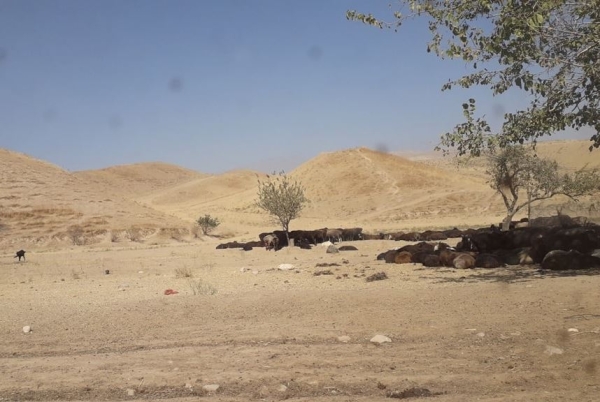
Photo: Asia-Plus
Tajikistan will be able to benefit $4-6 million annually in the coming years through the introduction of modern satellite technologies for drought monitoring.
On August 20, 2025, Tashkent announced the launch of a large-scale regional drought monitoring project using remote sensing technologies. The initiative is being implemented with the support of the United Nations Economic and Social Commission for Asia and the Pacific (ESCAP), and its budget at the first stage is $300,000.
In the next two years, the system will be tested in Uzbekistan, and by 2027 it will be adapted for Kyrgyzstan and Tajikistan.
According to experts, once launched, the system will allow Tajikistan to receive annual benefits in the amount of $4 million to $6 million by reducing crop losses, more effective water resources management and timely response to climate threats.
Tajikistan: 22% of GDP is under threat due to climate
Central Asia is considered one of the most vulnerable regions of the world to climate change. Over the past three decades, the average annual temperature here has increased by 1.2 °C, which is higher than the global average of 0.85 °C.
At the same time, precipitation decreased by 15-20%, and droughts began to recur more frequently and cover more and more large territories.
This problem is particularly critical for Tajikistan: about 22% of the country's GDP is generated by agriculture, and more than 15% of the population – about 1.5 million people – live in areas of increased risk of droughts.
The situation is aggravated by the mountainous terrain and limited water resources, which is why even minor climatic fluctuations can lead to serious consequences for the economy and people's lives.
Traditional monitoring does not save
Current weather stations in Tajikistan do not allow recording local changes in soil moisture or vegetation conditions in full.
In mountainous areas, where weather conditions literally change from valley to valley, traditional monitoring is not able to provide the necessary accuracy and speed.
Instead, the new system will use data from European Sentinel-2 and American Landsat-8 satellites. They allow you to track the vegetation index (NDVI), which is the condition of crops, record surface temperature and determine soil moisture.
The accuracy of forecasts reaches 80-85%, and data is updated every 5-10 days.
For farmers and agricultural departments, this means the opportunity to prepare for a drought in advance: plan irrigation, choose crops, and use water more efficiently.
In 2024, a project was launched to create a climate monitoring system in Central Asia. At the first stage, a methodology was developed and data collection was carried out. Pilot projects have already begun in 2025 in Karakalpakstan and the Ferghana Valley, which should show the effectiveness of the approach in practice.
The next step will be the implementation of the system throughout Uzbekistan in 2026. And by 2027, Kyrgyzstan and Tajikistan are planned to join the project.
The initiative will train about 150 specialists, as well as integrate satellite data into national weather services, which will significantly improve the accuracy of forecasts and the region's resilience to climate risks.
Saving millions and curbing migration
The introduction of a climate monitoring system promises tangible economic and social benefits for Tajikistan.
According to experts, it will make it possible to reduce crop losses by 10-15% annually, providing, as already noted, an economic gain of $ 4-6 million. This will directly strengthen the country's food security and reduce social tension in rural areas, where most of the population depends on agriculture.
In addition to the economic benefits, the project will be a deterrent to migration caused by water scarcity and loss of income sources.
An important part of the program is the integration of national monitoring systems with global platforms such as Copernicus, which will improve the quality of forecasts and responsiveness.
The environmental and social consequences of droughts in Central Asia are already noticeable:
- 4.2 million people (12% of the population) live in the risk zone in Uzbekistan,
- 1,1 million (16%) in Kyrgyzstan,
- 1.5 million (15%) in Tajikistan.
In Uzbekistan alone, during the period 2018-2023, a decrease in water supply led to the migration of 120,000 people.
The implementation of a monitoring system can mitigate such effects by ensuring a more equitable distribution of water resources and humanitarian assistance.
The experience of the world is the basis for Central Asia
Successful international experience will be used to create a climate monitoring system in Central Asia. Similar technologies have already proven their effectiveness in other countries.
For example, in Australia, the DroughtWatch system reduced losses in the agricultural sector by 12%, and in India, thanks to the INSAT-3D system, forecast accuracy increased to 78%.
These developments will form the basis for the development of a regional platform that will help Central Asian countries respond to climate risks in a timely manner and minimize the effects of droughts.
The Internet, human resources and finance are barriers on the way
Despite the long-term plans, Tajikistan has several serious challenges on the way to implementing a climate monitoring system.
In rural areas of the country, Internet coverage covers only about 55% of the territory, which makes it difficult to quickly exchange data.
In addition, there is a shortage of specialists who have the skills to work with Earth remote sensing data.
An additional obstacle remains the high cost of system maintenance, estimated at about $50,000 per year.
Future steps
However, ESCAP and its partners intend to support the country by providing training for specialists and ensuring integration into the global Copernicus and UN-SPIDER platforms. This will make it possible to use international resources and reduce the financial burden on the national budget.
After successful adaptation of the system in Tajikistan, the project is planned to expand to Kazakhstan and Turkmenistan. In the future, the integration of artificial intelligence algorithms is envisaged, which will increase the accuracy of forecasts up to 90%.
The final stage will be the creation of a unified regional water resources management system covering all Central Asian countries and strengthening their resilience to climate challenges.




